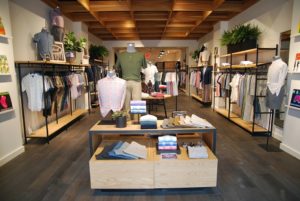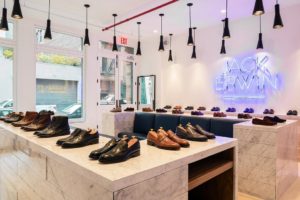An increasing number of retailers are setting up showrooms where customers can examine the products available but not buy them home – they have to be ordered via the company’s website instead.
Web commerce has greatly changed our shopping habits and when competing with the web, brick-and-mortar stores are forced to provide the customer with much more than just selling. For example, Louis Vuitton, one of the world’s leading fashion houses, invests in exhibiting art. Yoga clothing retailer Lululemon Athletica offers its customers yoga lessons, art exhibitions, film nights and even concerts besides the clothes. But even that may fail to help in competition with an online store.
Estonian companies also complain that even if a potential customer comes to the store to look at products and try them on, more and more people go home without making a purchase and order the item needed online at a later date and for a lower price. Consequently, Estonian retailers fight a daily battle for enticing the customer not only to visit the store to examine the merchandise but also to make a purchase where – the customer is offered added value at the store in the form of an excellent customer experience or warranty for the product. Elsewhere in the world, several companies make use of customers’ gusto for online shopping by opening stores where you can look at products but not buy them home and basing their sales activity on IT.
An example is the USA-based menswear retailer Bonobos where shirts and trousers can be tried on but not bought. Back in 2011 when the company started experimenting with this business model, many thought the idea rather odd. Now they have around twenty such stores and are planning to expand the store network even further.
Bonobos started with online sales but soon became aware of the need for a physical store as well. Their showrooms feature a number of models in different sizes but not all models in all sizes. The salespeople at the store not only help the customer to find an item of clothing in a suitable size but also to order it online from the store; the purchase will then be shipped to the consumer’s home or office. According to Andy Dunn, the founder of the company, the key to their sales success is that the stores don’t have to work with both selling and stocking – they never have to deal with the issue of a specific store running out of a specific trouser model. The company has one central warehouse which solves the problem.
In Estonia, Hansapost is experimenting with a similar concept, has opened a showroom at Järve Center where orders can be submitted but they will be shipped to the customer by mail.
The idea of Bonobos’ showrooms was to separate the presentation of a product from its distribution. While this model has already been used for large and heavy items such as sofas – people want to see a sofa before buying but don’t take the purchased sofa with them due to its weight–, clothing retailers have now also discovered the disadvantages of brick-and-mortar stores. When goods are sold and stored at the same location, it entails a need for larger premises (usually inexpensive city areas) and other additional costs. For example, employees are busy unpacking and packing goods instead of interacting with customers. As it is impossible to predict which clothing item sells better at a particular shop, a larger inventory is needed which inevitably means that all products cannot be sold out at an equal rate and leftover items have to be discounted.
Online stores don’t need to deal with these issues but online commerce is still not the solution to every problem, as many people want to see, touch and try on the merchandise. With that in mind, several stores have been opened where consumers can look but not buy. For instance, Paul Evans and Jack Erwins have supplemented their online shoe stores with brick-and-mortar showrooms in New York where a potential shopper can look at the shoes but not buy them home – they have to be ordered online.
Warby Parker does the same with glasses.
A customer visiting a shop is accustomed to leaving it with the desired product. When a customer visits a showroom and leaves without a purchase (even if they are interested in a product), there is a risk that they will make the purchase somewhere else. Various campaigns can be arranged in order to prevent this, e.g. visitors are offered a certain discount on the purchase if they take a photo of the product at the store and post it on social media. So the company avoids missing out on the deal and the shopper’s activity on social media promotes the company.
Shopping is also facilitated by specially developed technological aids at showrooms. Asian online retailer Zalora displays its clothing in pop-up stores in Singapore, Malaysia, Hong Kong and Indonesia where customers can try on clothes, get stylist advice and order products using a shopping terminal at the store and a specially developed app where they scan QR codes with their phones. According to the company’s sales team, temporary sales points like these help to build up trust both in the innovative business model and in the young brand.
Good to know:
When a regular physical store is substituted with a showroom:
Reduced costs on store and warehouse premises.
Reduced costs due to smaller inventory.
Salespeople can work with customers instead of unpacking and packing goods.

